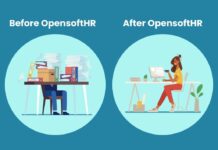As we’ve observed rapid changes in corporate infrastructure and regulations over the years, many businesses are finding it increasingly difficult to keep up. With one particular area of concern: Managing Payroll.
If you are a first-time business owner reading this, perhaps you might think that the idea of managing your company’s payroll is as simple as getting your employees paid on time, and accurately. Well you’re not wrong, but you’re not entirely right either. While that is indeed the foundation of a good payroll system, it is most certainly not limited to just that. Payroll in itself, involves a huge range of factors including: salary, leave dates, benefits, miscellaneous expenses, commissions, bonuses and contributions just to name a few.
As in any business, it is critical to ensure accurate processing of payroll mostly because the payslip is one of, if not the most important reason why employees come to work every day. Having it be disrupted or delayed will certainly upset employees who will start to doubt the security of their job and this may inevitably lead to businesses potentially losing their best employees. You also wind up wasting unnecessary time(and money) answering to regulatory agencies if your HR manager is not kept up to date with the latest employment regulations. Let’s get real, employment regulations update way too often for any HR practitioner who is probably wrapped up in processing payroll and handling employee affairs to keep up with.
An updated payroll software is critical for regulatory compliance, ensures payroll automation continues, simplifies handing over of payroll duties among staff. Keeping payroll software updated ensures fast processing of payroll and contributes to the success of a business in these ways:
1. Stay on top of Employment Regulations
Employment laws update pretty often and just in Singapore alone we’ve seen a roll out of new regulations effective as of this year, including a two-week period of paternity leave entitlement for new fathers as well as the increase in the qualifying salary of employment pass (EP) applications for foreign workers. Understandably, employment regulations have to be frequently updated as they are more or less responsive measures to social issues including unemployment rate and ever changing perceptions within society.
Needless to say, this only spells even more headache for HR practitioners if they are expected to manually note down every single update and it’s easy to miss out on the fine details. Most payroll software out there are well equipped with automated updates that enables your business is kept up to date with key regulatory changes relating to your payroll.
2. Standardize HR processes for Business Continuity
In many companies, payroll functions are shared among various employees within the HR department. However not only does the lack of standardization present businesses with the huge challenge of remaining compliant, but it also carries the risk of a potentially major disruption when a key employee leaves, thereby taking their knowledge of their payroll function with them. A payroll software not only contributes to the automation of payroll processes, but also makes it a lot easier for handover of simplified payroll duties from one employee to the next.
3. Gain Insight on Employees
For most of us, we think of payroll as a boring and monotonous periodic transaction that does just one thing: pay employees. But what we’re forgetting is that payroll involves a wide gamut of information that can be very useful when it comes down to analyzing your workforce. Payroll involves people, and people create business. It is only through a well documented payroll system that you will find information on both the people and its associated costs; basically defining the bridge between HR and finance. Having access to vital information regarding cost of business activities, corporate rewards and the impact of HR’s efforts to retaining key talent renders even greater importance that payroll data has in the broader organizational picture.
Understandably, it is not easy to venture into incorporating payroll system solutions. One of the pain points would include having to understand what your business needs are and what solution out there that can cater to those needs. For example, if your business operates in various countries, you may require a payroll solution that incorporates frequent updating of regulatory requirements in the respective countries. But of course if the business operates solely in one country alone, perhaps it is best to look for a local payroll solution vendor who is best equipped with the knowledge for your payroll needs.
Through our progression towards a more transparent workforce that emphasizes open engagement among employees of all levels and ages, having to deal with payroll glitches is not something all businesses can afford.
 Home
Home















